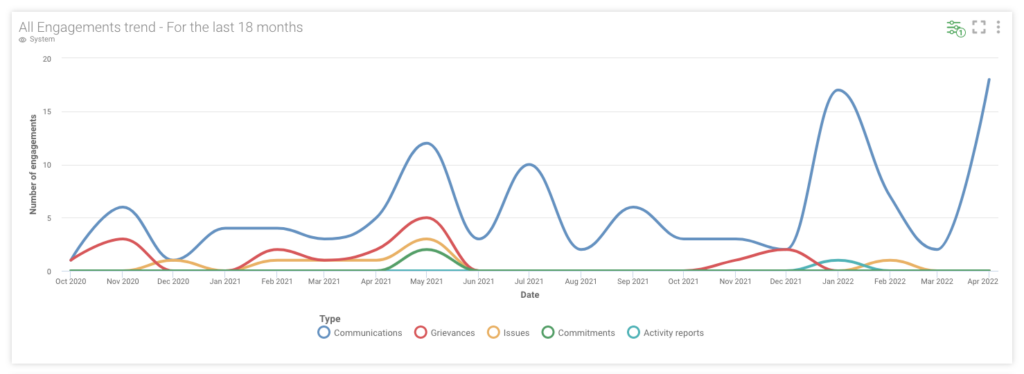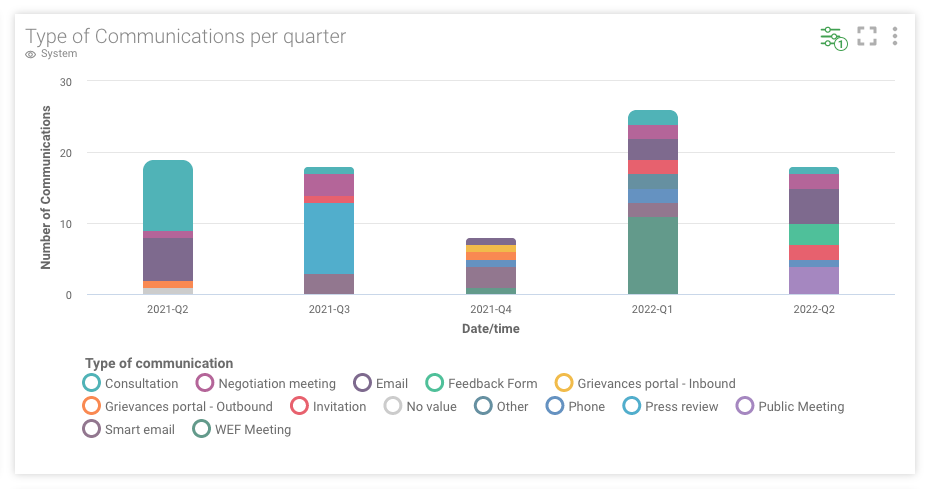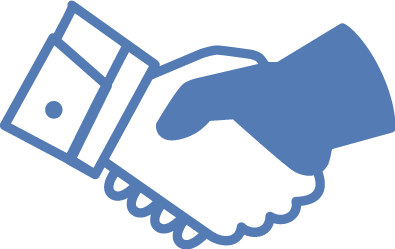Structured teams communicate regularly with stakeholders, but effective teams communicate proactively with stakeholders. They also learn from them to continually improve their strategies and achieve social acceptance more quickly.
Understanding stakeholder communication
Stakeholder communication can be defined as all verbal and written exchanges between a company and the individuals or groups affected by or interested in its activities.
The quality of this communication is crucial. For, depending on their level of influence, stakeholders are likely to influence the course of activities, and even their results. This ability can be either positive or negative.
For a project or an organization, stakeholders share many roles. The heterogeneous group of stakeholders includes:
- Donors
- Governments at all levels
- Local communities, including indigenous communities
- Environmental groups
- Suppliers and partners, etc
Whether providing funding, legislating, or defending the rights of individuals or the future of the planet, these roles cannot be overlooked. The actions and opinions of these different groups demand close attention and ongoing dialogue.
Why is it important to communicate with stakeholders?
Depending on the type of project you’re working on, you may need to communicate with stakeholders to comply with regulations or international standards. Beyond that, establishing a dialogue with stakeholders can bring both operational and strategic value.
It can help you to:
- Manage stakeholder expectations to mitigate social risks (e.g. frustration, negative reactions);
- Establish and maintain a social license to operate;
- Understand and respond to your stakeholders’ needs and concerns;
- Balance the interests of stakeholders with those of the company;
- Demonstrate transparency to show that you are acting in good faith; Meet requirements such as the Free, Prior, and Informed Consent (FPIC) standard.
The consequences of poor communication with stakeholders
On the other hand, lack of communication or poor communication with stakeholders can have negative, even disastrous repercussions.
Project managers who fail to communicate their plans, or companies that fail to provide an environmental assessment to government bodies, risk running into regulatory compliance problems. This can lead to delays and cost overruns.
Poor communication with investors, particularly about risk management, can lead to loss of confidence and withdrawals.
As for communication problems with communities or pressure groups, these are likely to lead to resistance and opposition. These can take the form of public protests, demonstrations, or even legal action, which in turn can influence popular opinion or even lead to temporary or permanent stoppage of work.
In extreme cases, a lack of communication between a company and its host communities can lead to disaster.
Example of poor communication with stakeholders
In 2015, in the city of Mariana, Brazil, the Fundão dam, which was holding back toxic sludge and mineral waste, broke, killing 19 people and releasing around 40 million m³ of toxic waste that devastated the surrounding area.
In the aftermath, the Samarco company was criticized for numerous failings, including “the absence of information on the health risks posed by the sludge and on the risk levels of other nearby dams.”
This omission, along with other negligence, took on an even more deplorable meaning when a second dam collapsed in January 2019, this time at the Corrego do Feijão mine in the town of Brumadinho. The tragedy was even more deadly than the first, with over 240 people killed.
If the first tragedy – already problematic – had prompted the miner to demonstrate greater transparency and establish an effective communication plan, perhaps the toll of the second would have been less heavy.
Key principles of effective stakeholder communication
Start early
Engaging in dialogue with stakeholders early on in the project planning process is certainly an investment in resources, but it brings many benefits. It helps to identify stakeholders’ needs and expectations and to take them into account from the outset. Communicating and exchanging with stakeholders early in the process also helps to define certain risks and better prepare to mitigate them, and can prevent misunderstandings and potential conflicts by ensuring that the project is well understood. And all these points contribute to obtaining or increasing stakeholder support for the project.
Transparency and honesty
These two qualities are fundamental to establishing and maintaining trust, an essential element in lasting, productive relationships. By providing clear information on objectives and strategies, transparency also helps to manage stakeholder expectations and prevent conflicts. Companies that communicate transparently also increase their level of credibility and reliability, further enhancing their reputation.
Regular updates and verifications
Keeping stakeholders properly informed of project progress and regularly consulting them on their opinions and concerns helps to fuel and maintain their commitment. It also enables problems to be detected and remedied before they reach alarming proportions. By remaining alert in their communications, companies also ensure that they remain agile and adaptable in the face of change, opportunity, and the unexpected.
Active listening and feedback loops
Active listening enables companies to gain a deeper understanding of stakeholders’ needs, concerns, and expectations. Together with feedback loops, it enables risks and problems to be identified quickly. Both elements promote continuous improvement by integrating feedback into decision-making processes. They help create a corporate culture that values openness, respect, and innovation.
Tailoring communication to stakeholders' needs and preferences
Personalized communication is more likely to engage stakeholders; taking into account their specific interests and concerns demonstrates the company’s respect for their uniqueness. By communicating before stakeholders in their language and using their preferred method, the company ensures that its messages are accessible to all those to whom they are addressed. Messages adapted in this way are more likely to be received and understood, increasing the effectiveness of communication.
Determine your engagement strategies and communication methods with your stakeholders
Mobilization strategies
Once you’ve identified your stakeholders, you’ll want to carry out a stakeholder analysis and map them out. This will help you create effective engagement strategies. Stakeholders can be classified in several ways:
- By group (community, organization, club, etc.)
- By level of interest in the project
- By level of influence
- By expectations and/or requirements
Find out how stakeholder mapping can help you define the right communication strategy.
Some people will need to be kept informed on an ongoing basis, while others can be informed on an as-needed basis. Before you start communicating with stakeholders, mapping can help you determine which strategies will be effective for each group and at each stage of the project.
Communication methods
The communication methods selected for your stakeholders are an integral part of the mobilization strategy for each of them. They can be :
- Traditionnelles
- Face-to-face meetings
- Telephone calls
- Postal mail
- Printed publications
- Meetings and presentations
- Modern
- E-mails
- Corporate website
- Social networks
- Videoconferences
- Podcasts and videos
- Advanced applications and notifications
- Online collaboration tools
Choosing the best communication methods for each stakeholder
How do you determine which means of communication will be most effective with a given stakeholder?
If you’ve already started collecting some information about the stakeholder, check whether you already have access to their communication preferences and expectations. In the absence of such information, the question can be asked directly. Does the stakeholder have easy access to technology? Or a decent Internet connection? Do they prefer face-to-face conversations or e-mail?
The choice of a communication method may also depend on other factors such as :
- The nature of the message – Is it informative? Is it a request that requires a quick response?
- The message’s objective – Do you want to persuade someone, or solicit their opinion?
- Desired frequency – Is the message a one-off, or will it need to be updated regularly?
- Available resources – What is your communications budget? Do you have the necessary technical and human resources?
All these factors should enable you to choose the right means of communicating effectively with your stakeholders.
To manage stakeholder communications effectively, you need to be able to track them, extract information, and produce reports.
Over the life of a project or company, stakeholder communications generate an enormous amount of data. Over time, it can become increasingly difficult to :
- Manage all channels of communication with stakeholders;
- Document interactions to create a corporate memory;
- Produce reports (if required) for compliance or internal audits.
To increase your project’s chances of success, here’s a step-by-step guide to drawing up a stakeholder engagement plan.
Wondering how you can easily make sense of your stakeholder interactions or quickly create polished reports for all your stakeholder data?
Maintain communications with stakeholders
Once you’ve started communicating with stakeholders, you’ll need an effective way of keeping track of these communications. Documenting interactions in a single, central location will help you stay on top of this growing volume of stakeholder communications.
If you’re still working with tools like email, spreadsheets, and SharePoint to collate and analyze your data, you know how cumbersome and inefficient this approach can be. This is particularly true if you work with a large number of stakeholders, or have specific reporting requirements (for example, those of a lender). A suitable solution should make it possible to centralize e-mails sent from Outlook or Gmail, and easily collect SMS messages.
Stakeholder communication methods and tools - Advantages and disadvantages
The number and diversity of communication methods can be confusing when it comes to deciding which is the most appropriate for a particular use or stakeholder. What’s more, some may have strengths in terms of ease of use, but weaknesses in terms of tracking and tracing communications. Here’s a summary of the different stakeholder communication methods in common use, along with the advantages and disadvantages of each
Letter
Benefits
- Same content can be sent to several stakeholders at once
- Good for formal communication or sharing a lot of information
- Reaches stakeholders who don’t have access to telephone or e-mail (e.g. people in remote locations)
- Preferred by certain stakeholder groups, such as the elderly
Disadvantages
- Difficult to track (whether the letter arrived, who opened it, etc.)
- Cost of materials (paper, envelopes, printer, ink) and postage
- Slow transit time
- Makes two-way communication difficult within a reasonable timeframe
Phone call
Benefits
- A quick and easy way to establish timely, two-way communication
- Personal approach
- Assurance that the stakeholder has received and understood your message
Disadvantages
- It’s increasingly difficult to reach people on the phone
- Conversations are usually annotated in personal notes, so details shared with others (e.g. via a spreadsheet) tend to be messy and incomplete
- Time-consuming; each agent can only make one call at a time
Text messages (SMS, Messenger, WhatsApp)
Benefits
- Fast and easy; can be sent to several stakeholders at once
- Receipt can be confirmed
Disadvantages
- Only suitable for short messages
- Can be ignored or treated as spam
- Responses can be difficult to manage if many stakeholders respond at the same time
- Important information can be lost if team members forget to copy communications from their devices to the shared location
Benefits
- Quick and easy; can be sent to several stakeholders at once
- Receipt can be confirmed
- Can include links to additional information or resources
Disadvantages
- Can be ignored or considered spam
- It can be difficult to know who else in the organization has contacted a stakeholder since everyone has their inbox
- Important information can be lost if team members forget to copy their e-mail communications to the shared location
Social media
- X (formerly Twitter)
Benefits
- Quick and easy to share
- Easy to follow (unless communications go viral)
- Can be used for both formal and informal messages
- Can include links to additional information or resources
- Can be shared with multiple stakeholders at once
- Can be shared by stakeholders or go viral
Disadvantages
- It can be difficult to control the conversation if a message is widely shared or goes viral
- Impersonal
- Susceptible to trolls
- May miss the target audience
Meeting in person
Benefits
- Highly personal
- Real-time, two-way communication
- You can confirm that your message is understood
- You can read body language
- You can see the dynamics between stakeholders in group meetings
Disadvantages
- Details are usually recorded in personal notes, so information shared with others (e.g., via a spreadsheet) tends to be messy and/or incomplete
- Potentially costly in terms of time and money: travel, availability, schedules, etc
- In group meetings, there’s a risk of losing control of the conversation
Extract hidden trends from your stakeholder communications Consider the following scenario
A key stakeholder suddenly asks to meet you face-to-face. You want to have an idea of what to expect – and what to say – before you walk through the door. To prepare for this meeting, you need to quickly review all previous communications with this person (including those in which you were not involved) and assess any changes in their feeling or influence.
How long this takes depends on how your organization manages stakeholder communications.
Methods and tools for extracting information and creating activity reports - Advantages and disadvantages of each
An effective communications plan requires proper monitoring and diligent management of stakeholder interactions and the information gathered from them. It also includes the production of reports, which is essential for synthesizing information and presenting results clearly and concretely.
Some more traditional methods can be used, with more work and mixed results. Others, however, are better suited to these tasks.
Here’s an overview of these solutions, with their advantages and disadvantages.
Paper
Benefits
Inexpensive
No special training required
Disadvantages
Data not easily accessible; must be searched for
Data is more difficult to secure; confidential documents must be physically protected
Data is more difficult to work with (text cannot be copied or exported, it must be re-typed)
Documents may be lost over time; colleagues may be absent from work, etc
No single data source
- It takes a lot of time and effort to :
- Gather all communications and data
- Analyze and interpret data (changes in stakeholder sentiment, etc.)
- Create reports
Calculation sheets
Benefits
- No extra cost
- User-friendly (little or no training required)
- Reports are automated to some extent
- Lots of flexibility in how you structure your data
Disadvantages
- Limited analysis and reporting functions
- Difficult to interpret data (changes in stakeholder sentiment, etc.)
- Such flexibility requires special skills in data structure to make it effective
- Version control can be problematic (no single data source)
- Data may need to be collated and standardized if multiple files are used
- High risk of data loss
- Not designed to report on communications with stakeholders
- Reports often lack professional rigor
- Requires solid knowledge of functions to generate reports
Mixed approach (use of multiple tools such as spreadsheets, Outlook, paper, cell phones, shared folders, etc.)
Benefits
- Familiar (status quo for many teams)
- No behavioral change required
- Flexible; allows each team member to do things “his or her way”
Disadvantages
- Extremely difficult to evolve
- No single data source
- Extremely time-consuming to search, gather, and standardize information for analysis and reporting
- Reports must be generated manually
- High risk of negligence
Modified CRM (Customer Relationship Management platform)
Benefits
- System may already be in use within the organization to manage customer relationships
- Single data source; centralized data accessible from any location or connected device
- Makes it easy to give meaning to communications
- Automated, professional reporting
Disadvantages
- Expensive if not already in use
- Not designed for managing, analyzing, and reporting on stakeholder engagement activities
- Costly and time-consuming to configure fields and functionalities so that they are useful for analysis and activity reporting
- Does not reflect best practice in stakeholder relationship management
- Not easy to use and not suitable for non-technology-savvy staff
- Difficult to manage multiple stakeholder positions
Benefits
- Data is instantly accessible from any location or connected device (no tracking, collation, or standardization required)
- Analysis and reporting are fully automated, making them easy to interpret
- Data can be analyzed in a variety of ways to suit your needs
- Professional, meaningful reports can be created in just a few clicks, for any type of data (all functionalities and fields required)
- Built-in report templates can be used and configured as required, or users can create their own
- Reports can be automatically scheduled, generated, and sent to an unlimited number of stakeholders, at any frequency
- Reflects best practices in stakeholder relationship management
- A vast global community of practitioners makes improvements over time
- Offers enhanced data security for the protection of personal data
Disadvantages
- Depending on the choice of software, it can be costly if the team is very small (1-2 people)
- Depending on the choice of software, it may be useless if mobilization activities involve only a small number of stakeholders
- Requires user training
Overcoming common communication problems
Certain communication challenges are shared by most managers responsible for building relationships with stakeholders. What do you do, for example, if a key stakeholder doesn’t want to get involved in a project? Or if a stakeholder group doesn’t have access to the Internet? Here are three potential challenges for stakeholder relations managers.
Dealing with resistant or indifferent stakeholders
It’s almost inevitable that you’ll encounter some more difficult stakeholders during a project. For different reasons and to varying degrees, they may display feelings ranging from indifference to hostility. Here are a few ways of dealing with them.
- Take advantage of the information gathered on all stakeholders to identify those who are likely to be problematic
- Understand their interests, level of influence, and knowledge of the project
- Practice active listening
- Remedy gaps in project knowledge
- Ensure that communications are clear and transparent
- And always act with respect, self-control, tact, and honesty
By being proactive and diplomatic, you increase your chances of building trusting relationships with your stakeholders.
Crossing cultural and linguistic barriers
If some of your stakeholders come from different cultures or speak a different language, there are several things you can do to mitigate or eliminate the impact of the situation and ensure proper and effective communication with them.
- Find out about their culture and its particularities, their values and customs, and adapt communications accordingly
- Sensitize teams to these realities through training, for example
- Hire quality translators or interpreters
- Use appropriate visual elements (images, graphics, videos, etc.)
- Encourage active listening (you) and feedback (stakeholders) to monitor message comprehension
Using these strategies also demonstrates openness and respect. Once again, this helps build healthy relationships.
Respond effectively to stakeholder communication requirements
The first step to ensuring communication that meets stakeholder expectations is the same as for the previous points. You need to know your stakeholders and their requirements. Once you’ve got that grounding, you need to:
- Always express yourself clearly and concisely
- Establish clear communication channels by mutual agreement with the stakeholders
- Tailor messages to personalize them
- Encouraging, once again, transparency, honesty, and openness
- Evaluate the effectiveness of communications on an ongoing basis, so that adjustments can be made if necessary
In short, whatever the communication challenge, the solutions often overlap knowledge of the other, professional behaviors, clarity of messages, then monitoring and adjustments.
Three tips to remember for good relations with your stakeholders
Building and maintaining trust
It’s the cornerstone of any healthy relationship. Certain qualities and actions have the power to foster the development of lasting relationships:
- Keeping promises and commitments
- Acting fairly and responsibly
- Involving stakeholders in the decision-making process
Reliability, integrity, and inclusion can be added to the guidelines already provided.
Make sure messages are clear and avoid jargon
We can’t stress this enough: clear communication is essential, especially for community stakeholders, who are not necessarily mining or sustainable energy specialists, for example. It’s vital to give all stakeholders the same opportunity to fully grasp the ins and outs of a project.
Conciseness and simplicity are two major elements of message clarity. Add to this a concern for expressing yourself in quality language, and you increase the likelihood that your communications will be understood by as many people as possible.
The importance of timely response and follow-up
Your stakeholders have questions, fears, demands, concerns, and requests. If they take the trouble to express them, it’s vital to respond to them and monitor the evolution of the conversations.
These interactions are opportunities to demonstrate your ability to listen, your desire for inclusion, and your commitment to taking into account the point of view of all concerned.
Track and manage your stakeholder communications more effectively with the right tools
As a stakeholder relations professional, you know that simply managing these interactions can already be a real headache. In addition, you need to ensure that you understand your organization’s relationship with different stakeholder groups so that you can interact with them accordingly. And finally, you need to know how these relationships have evolved, to avoid missteps that could jeopardize a relationship. Sometimes it feels like there aren’t enough hours in the day! So how can you make sense of all this data and be sure to extract meaningful information from your communications?
Modern, adapted tools are specially designed to minimize manual work. For example, a mobile app lets you update stakeholder data from anywhere and can save you precious time. This increased efficiency allows you to focus on engaging stakeholders instead of spending time sorting spreadsheets or retyping notes. Better tools can help your organization engage more proactively, nurture better stakeholder relationships, and put you on the fast track to social acceptance.
Here’s a look at how the right stakeholder management software can save you valuable time and help you work more efficiently:
Dashboard to monitor your communications in real-time

Production time: 3 minutes

Production time: 3 minutes
Tableau de bord pour mieux comprendre les tendances de vos communications

Temps de production : 3 minutes
Continuous improvement of communication with stakeholders
On the contrary, communication is not a static act. And all the parameters that go to make it up – interlocutors, message types, methods, etc. – are likely to change or need adapting, especially over a long period. – are likely to change or need adapting, especially over a long period. To ensure effective communication at all times, you need to evaluate it regularly.
Gather feedback from stakeholders on communication effectiveness
There’s nothing like surveying the people concerned to find out what they think of your communications practices. They are the first beneficiaries of your efforts, or the first victims of your failures. Regularly check with your stakeholders that your communications are appropriate and achieving their objectives.
Regularly review and update communication strategies
Using feedback from your stakeholders and your observations, review your communication strategies regularly, and act on any shortcomings. Are messages getting through to the right people? Are they explicit and concise? Are they well understood by their recipients?
Keep abreast of the latest trends and best practices in communications
Finally, keep an eye out for evolving best practices and innovations that can make communications management easier. As the need to communicate with stakeholders increases for just about every type of project, tailored and customizable solutions are emerging. High-performance tools capable of supporting even the most complex projects, lightening teams’ workloads, and standardizing monitoring, follow-up, and good communication habits.
If you’re tired of dealing with blind spots that put your stakeholder relationships at risk, contact us today! Our team helps organizations in different industries around the world improve their stakeholder management results. Once you’ve discovered the powerful features of our user-friendly software, you’ll never want to use a spreadsheet to track stakeholder communications again!





